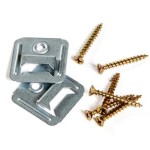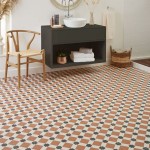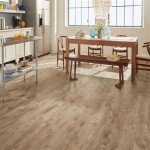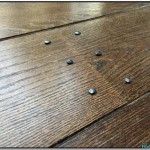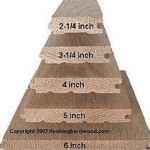Interlocking Outdoor Deck Flooring: A Comprehensive Guide
Interlocking outdoor deck flooring represents a versatile and increasingly popular solution for creating attractive and functional outdoor living spaces. This type of flooring, typically composed of individual tiles or planks that connect via an interlocking mechanism, offers a compelling alternative to traditional decking materials like wood, composite lumber, or concrete. Its ease of installation, diverse aesthetic options, and relatively low maintenance requirements make it an appealing choice for homeowners and property developers alike.
The appeal of interlocking deck flooring lies in its simplicity. The interlocking design allows for a "floating" installation, meaning the flooring is not directly attached to the subfloor or underlying surface. This eliminates the need for screws, nails, or adhesives, significantly simplifying the installation process. Furthermore, the modular nature of the system allows for easy customization and repair, making it a practical long-term investment.
This article will delve into the various aspects of interlocking outdoor deck flooring, including the different material options available, the advantages and disadvantages of this flooring system, installation considerations, maintenance requirements, and factors to consider when selecting the right product for a specific application.
Material Options for Interlocking Deck Flooring
The market offers a wide array of materials used in the manufacture of interlocking deck flooring tiles and planks, each with its own unique characteristics and benefits. Understanding these material differences is crucial for making an informed decision that aligns with specific needs and preferences. Some of the most common materials include:
Wood Composite: Composite decking, a blend of wood fibers and recycled plastic, is a popular choice due to its durability and resistance to the elements. It offers the aesthetic appeal of natural wood without the associated maintenance requirements. Composite materials are typically resistant to rot, decay, insect infestation, and fading, making them a long-lasting option for outdoor use. Interlocking composite tiles often feature a textured surface to provide slip resistance, enhancing safety. While generally more expensive than some other options, the longevity and low-maintenance nature of composite decking often justify the initial investment.
Plastic (PVC or Polypropylene): Plastic interlocking deck tiles are a cost-effective and lightweight option. These materials are highly resistant to water, stains, and mold, making them suitable for use around pools or in areas prone to moisture. PVC and polypropylene tiles are available in a variety of colors and textures, including those that mimic the look of wood or stone. However, plastic tiles may not be as durable or aesthetically pleasing as composite or hardwood options. They can also become hot under direct sunlight. The affordability and easy maintenance of plastic interlocking tiles make them a popular choice for temporary or budget-conscious installations.
Hardwood: Interlocking hardwood tiles offer the natural beauty and warmth of real wood. These tiles are typically made from durable hardwoods like teak, ipe, or mahogany, which are naturally resistant to decay and insect damage. Hardwood decking provides a luxurious and elegant look, but it requires regular maintenance, including cleaning and sealing, to preserve its appearance and prevent weathering. The cost of hardwood interlocking tiles is generally higher than composite or plastic options. Hardwood provides an authentic look, that offers a premium aesthetic appeal, but demands a commitment to ongoing care.
Stone or Concrete: While less common than the aforementioned options, interlocking stone or concrete tiles offer exceptional durability and a natural, rustic aesthetic. These tiles are heavy and require a sturdy subfloor. They are highly resistant to wear and tear, making them suitable for high-traffic areas. Stone and concrete tiles are typically more expensive than other materials, and their weight can make installation more challenging. However, their longevity and unique appearance can make them a worthwhile investment for those seeking a durable and visually striking outdoor flooring solution.
Rubber: Recycled rubber interlocking tiles are often used in playgrounds or exercise areas, but they can also be used on decks, especially in areas where cushioning or impact absorption is desired. Rubber tiles are durable, slip-resistant, and easy to clean. They are available in a variety of colors and thicknesses. While not as aesthetically appealing as some other options, rubber tiles provide a functional and safe surface for various outdoor activities.
Advantages and Disadvantages of Interlocking Deck Flooring
Interlocking deck flooring, like any other building material, comes with its own set of advantages and disadvantages. Understanding these pros and cons is essential for determining whether this type of flooring is the right choice for a specific project.
Advantages:
Easy Installation: The primary advantage of interlocking deck flooring is its ease of installation. The interlocking mechanism allows for a snap-together installation, eliminating the need for specialized tools or professional installers. This can save significant time and money compared to traditional decking methods.
DIY-Friendly: Due to the simplified installation process, interlocking deck flooring is a popular choice for do-it-yourself (DIY) projects. Homeowners can typically install the flooring themselves without extensive prior experience.
No Special Tools Required: The installation process generally requires only basic tools, such as a measuring tape, a level, and a saw for cutting tiles to fit around corners or obstacles. This accessibility further contributes to the DIY-friendliness of the system.
Portability: Interlocking deck flooring can be easily disassembled and moved to a different location. This is particularly useful for renters or those who anticipate relocating in the future.
Customization: The modular design allows for a high degree of customization. Tiles can be easily arranged in different patterns or colors to create a unique and personalized look.
Repairability: Individual damaged tiles can be easily replaced without having to replace the entire deck surface. This simplifies maintenance and reduces long-term costs.
Good Drainage: Many interlocking deck tiles feature a perforated or open grid design that allows for efficient water drainage. This helps to prevent water accumulation and reduces the risk of mold or mildew growth.
Disadvantages:
Subfloor Requirements: While interlocking deck flooring can be installed over a variety of surfaces, a level and stable subfloor is essential for optimal performance. Uneven or unstable subfloors can lead to uneven surfaces and potential damage to the tiles.
Potential for Movement: In some cases, interlocking deck tiles can shift or move under heavy use or extreme temperature fluctuations. This can be minimized by using high-quality tiles and ensuring a properly prepared subfloor.
Appearance: While many interlocking deck tiles are designed to mimic the look of natural wood or stone, they may not always achieve the same level of authenticity. Some homeowners may prefer the more natural appearance of traditional decking materials.
Cost: Depending on the material chosen, interlocking deck flooring can be more expensive than some traditional decking options. However, the ease of installation and reduced maintenance costs can often offset the higher initial investment.
Limited Lifespan (for some materials): The lifespan of interlocking deck flooring can vary depending on the material used. Plastic tiles may not be as durable as composite or hardwood options, and may require more frequent replacement.
Installation and Maintenance Considerations
Proper installation and regular maintenance are crucial for maximizing the lifespan and performance of interlocking outdoor deck flooring. Following the manufacturer's instructions and implementing a consistent maintenance routine will help to ensure that the flooring remains attractive and functional for years to come.
Installation Considerations:
Subfloor Preparation: The subfloor must be level, stable, and well-drained. Remove any debris, vegetation, or other obstructions that could interfere with the installation. Consider using a weed barrier to prevent weeds from growing up through the tiles.
Acclimation: Allow the tiles to acclimate to the outdoor temperature and humidity for at least 24 hours before installation. This will help to prevent expansion or contraction after installation.
Layout Planning: Plan the layout of the tiles carefully, taking into account any corners, obstacles, or desired patterns. It may be necessary to cut some tiles to fit around these features. Use a sharp saw and appropriate safety precautions when cutting tiles.
Interlocking Mechanism: Ensure that the tiles are properly interlocked to create a secure and stable surface. Follow the manufacturer's instructions for connecting the tiles.
Edging: Consider using edging pieces to create a clean and finished look around the perimeter of the deck. Edging can also help to prevent the tiles from shifting or moving.
Maintenance Considerations:
Regular Cleaning: Sweep or vacuum the deck flooring regularly to remove dirt, leaves, and other debris. This will prevent the accumulation of grime and help to maintain the appearance of the flooring.
Washing: Wash the deck flooring periodically with a mild soap and water solution. Use a soft brush or mop to scrub the surface. Avoid using harsh chemicals or abrasive cleaners, as these can damage the tiles.
Stain Removal: Clean up spills immediately to prevent staining. Use appropriate stain removers for the specific type of stain and material.
Inspection: Inspect the deck flooring regularly for any signs of damage, such as cracks, chips, or loose tiles. Repair or replace damaged tiles promptly to prevent further deterioration.
Sealing (for hardwood): If using hardwood interlocking deck tiles, apply a sealant or preservative every few years to protect the wood from weathering and decay. Follow the manufacturer's instructions for applying the sealant.
By carefully considering the material options, weighing the advantages and disadvantages, and following proper installation and maintenance procedures, individuals can make informed decisions and enjoy the benefits of interlocking outdoor deck flooring for many years.

Renwick 12 X Interlocking Wood Flooring Tiles For Deck Pack Of 27 Natural Com

Interlocking Ipe Wood Deck Tiles From Arrak Quick And Easy To Install

Btmway 1 Ft X Square Interlocking Acacia Wood Quick Patio Deck Tile Outdoor Checker Pattern Flooring 10 Per Box Cxxbn Gi33346w685 Tile01 The Home Depot

12 In X Solid Wood Interlocking Deck Tiles Natural Outdoor Flooring For Patio Bancony Pool Side 20 Pcs 21decktiles01r The Home Depot

Teak Deck Tiles Interlocking Wood Outdoor Flooring In

Perforated Interlocking Patio Tiles Over Concrete Made In Usa

Btmway Outdoor Wood Interlocking Flooring Tiles 12 X12 Solid Acacia Patio Deck All Weather Waterproof Composite Decking Floor For Backyard Balcony Square Pack Of 20 Brown Com

Wood Plastic Composite Grid Flooring Wpc Interlocking Deck Tile Outdoor Eco Friendly Diy Tiles China Made In Com

Mcombo 10pcs Patio Wood Deck Tiles 12 X12 Outdoor Interlocking F

Diy Ipe Wood Deck Tile With Interlocking Plastic Base Outdoor Decking Flooring China Composite Tiles Made In Com
Related Posts

